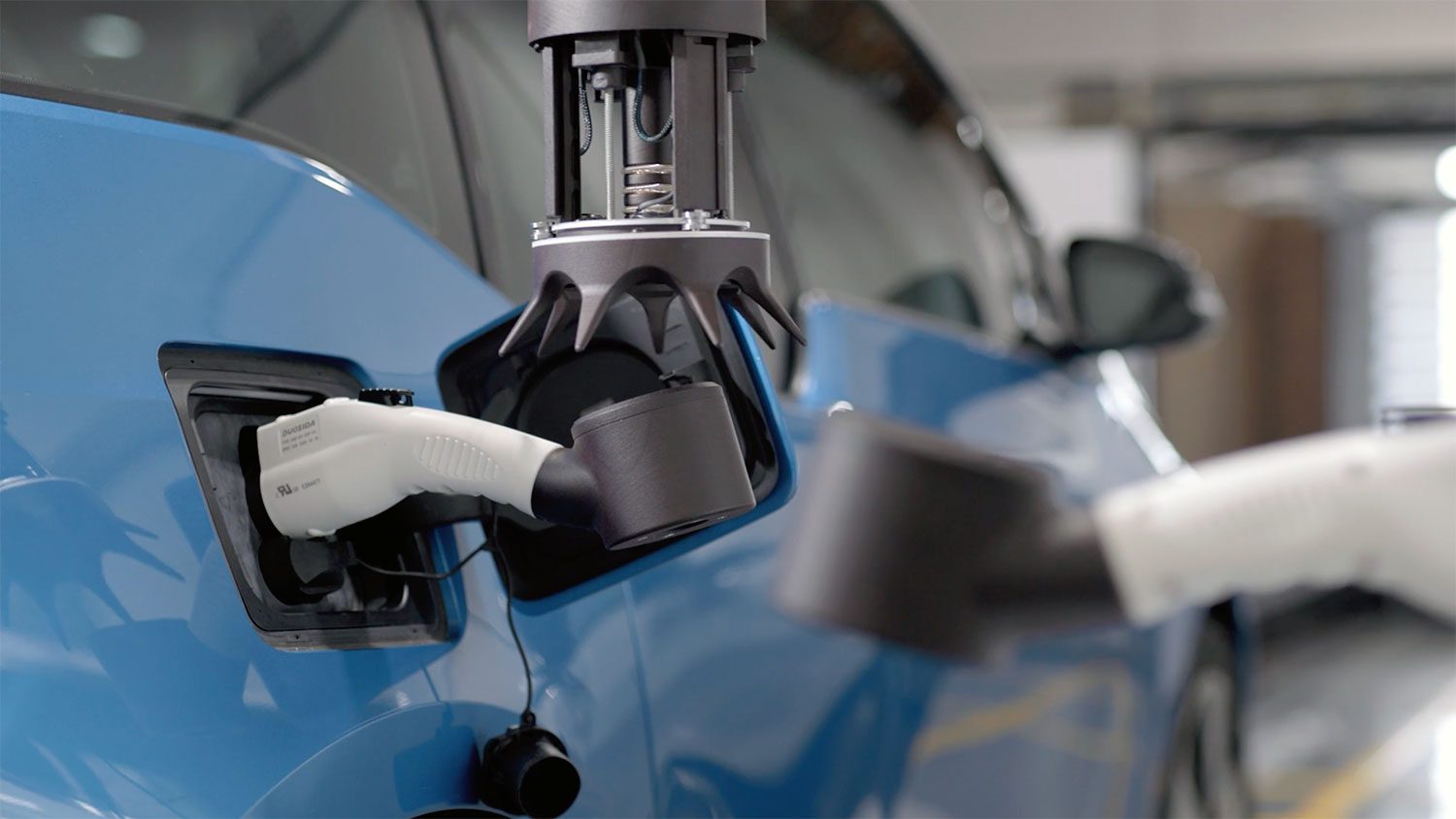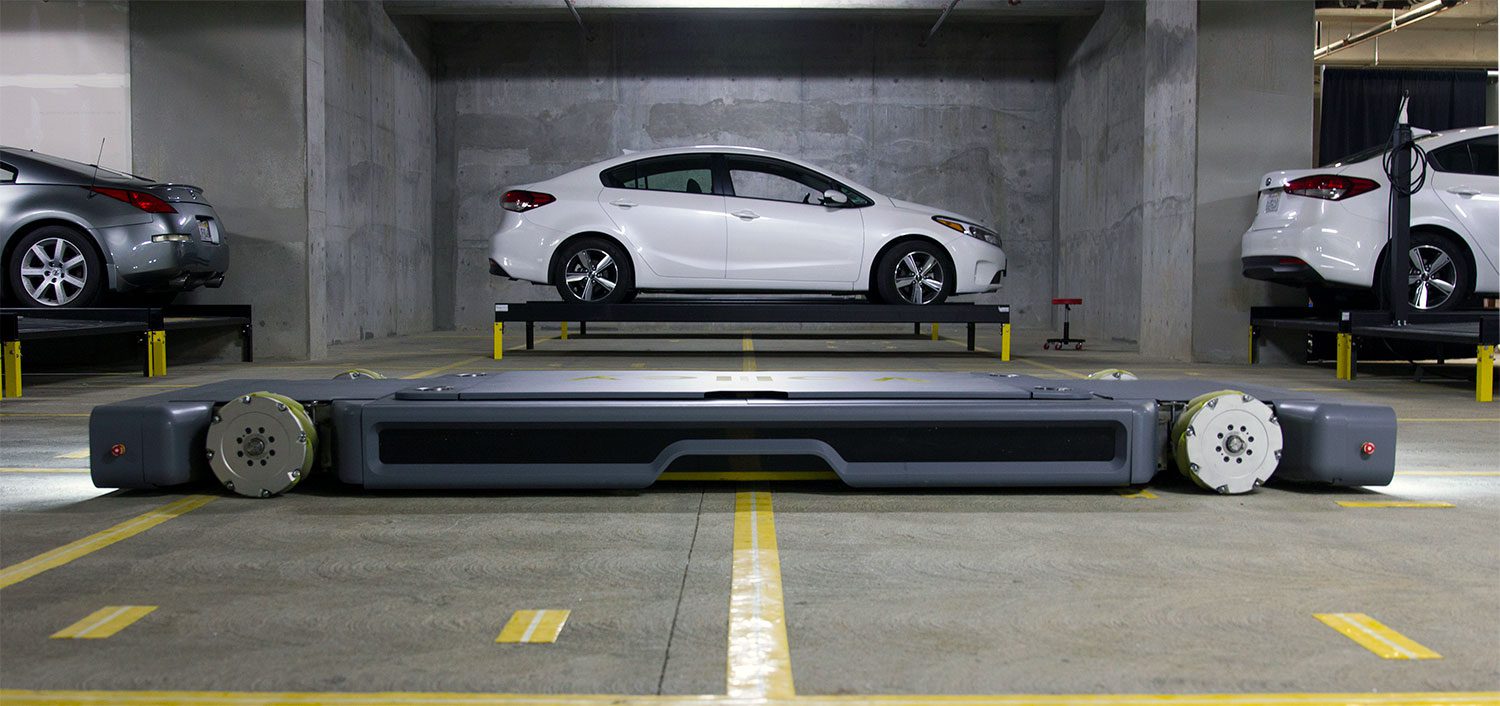
The landscape of urban transportation is undergoing a seismic shift with the rapid growth of electric vehicles (EVs). As more consumers embrace EVs, urban planners and developers are rethinking parking infrastructures, especially the integration of EV charging systems within urban parking garages. This transformation, while promising, remains challenging for many practical reasons, including costs, utilization rates, and future scaleability.
Current State of EV Charging in Urban Garages
Urban parking garages are increasingly becoming required to add EV charging stations, despite the many challenges and costs involved, including significant electrical upgrades and maintenance, new equipment that can mean a potential reduction in total number of parking spaces, and fixed infrastructure that can be blocked by a car parked in the charging station, but not using it – particularly during peak hours.
The Volley Approach: Robotics and EV Charging
As a part of a complete Volley Automation parking garage, Volley EV charging systems work alongside Autonomous Guided Vehicles (AGVs) that move and park cars throughout the garage. Each charging station can be utilized up to 100% of the time, because EVs are moved to the charger as needed, and when needs increase, more charging stations can be added.

The Advantages of Volley Charging Systems:
- Maximized Space Utilization: By eliminating the need for fixed charging stations at every parking spot, garages can reclaim space and potentially increase the total number of vehicles they accommodate and charge.
- Enhanced Efficiency: By moving cars to the chargers as needed, each charger is used to its fullest capacity, enhancing overall garage efficiency.
- Improved Accessibility: With robotic chargers, every parking space can effectively become a charging station. This universality could reduce competition for spots and alleviate range anxiety, making EVs even more appealing to urban residents.
- Cost-Effective: Even with upfront costs, the long-term savings from not having to install individual chargers at every parking space, coupled with reduced maintenance costs, often prove economically beneficial.
Looking Ahead
Automated EV charging systems such as Volley are just beginning to be installed, and in many cases are ahead of the curve on building codes and standards. The potential benefits for urban planning are substantial, and by enhancing the integration of EVs into the urban landscape, technologies such as Volley will help cities achieve their EV targets, contributing to environmental goals, reduced greenhouse gas emissions, and smarter, more sustainable cities.






